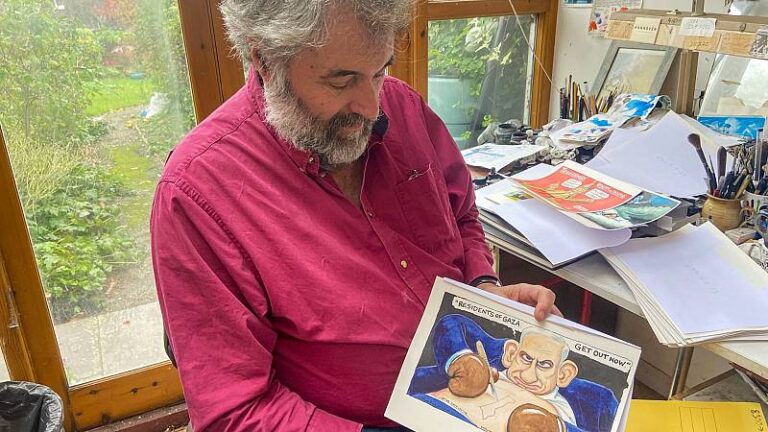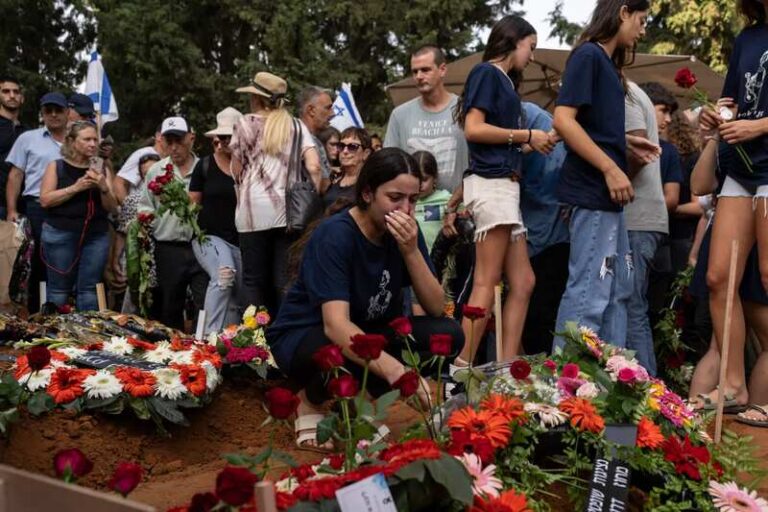Chaim Nachman Bialik
Chaim Nachman Bialik, often hailed as Israel’s national poet, was a towering figure in Jewish literature. His works, infused with deep emotion, cultural pride, and a profound connection to Jewish history and the Hebrew language, have left an indelible mark on the literary world. This article delves into the life and legacy of Chaim Nachman Bialik, exploring his early years, literary career, and enduring influence.
Early Life and Education
Birth and Family Background
Chaim Nachman Bialik was born on January 9, 1873, in the small village of Radi in the Russian Empire (now Ukraine). He was the youngest of seven children in a struggling family. His father, Yitzchak Yosef, was a timber merchant who passed away when Chaim was just seven years old, leaving the family in dire financial straits. His mother, Dinah, was a resourceful woman who took on various jobs to support her children.
Early Education
After his father’s death, Bialik moved to the home of his orthodox grandfather in Zhitomir. There, he received a traditional Jewish education, studying the Talmud and Hebrew texts. Bialik showed an early aptitude for learning and a deep love for literature, often escaping into books to cope with the harsh realities of his life.
At the age of 17, Bialik moved to the renowned Volozhin Yeshiva in Lithuania, a prestigious center of Jewish learning. However, his stay there was short-lived. The yeshiva’s rigid focus on religious studies did not satisfy Bialik’s burgeoning interest in secular subjects and modern Hebrew literature. He left the yeshiva after two years, moving to Odessa, a hub of Jewish intellectual and cultural life.
Literary Beginnings and Early Career
Move to Odessa
In Odessa, Bialik found himself in an environment that nurtured his literary talents. He joined a circle of writers and intellectuals, including Ahad Ha’am, one of the foremost Jewish thinkers of the time. It was in Odessa that Bialik began to write poetry in earnest, drawing on his deep knowledge of Jewish texts and his personal experiences.
First Published Works
Bialik’s first poem, “El Hatzipor” (“To the Bird”), was published in 1891 in the Hebrew periodical HaShiloah, edited by Ahad Ha’am. The poem, expressing a yearning for the Land of Israel, struck a chord with Jewish readers and marked the beginning of Bialik’s prominence as a poet. His early works often reflected themes of Jewish suffering, exile, and the longing for redemption.
Rise to Prominence
Poetry and Nationalism
As Bialik’s reputation grew, so did his influence. His poetry captured the zeitgeist of the Jewish people in the late 19th and early 20th centuries, a period marked by pogroms, rising anti-Semitism, and the struggle for Jewish national identity. His poems, such as “The City of Slaughter” (1903), written in response to the Kishinev pogrom, were both a lament and a call to action, urging Jews to defend themselves and seek a national homeland.
Literary Contributions
Bialik was not only a poet but also a prolific translator, essayist, and editor. He translated classical works into Hebrew, making them accessible to a broader Jewish audience. His essays and literary criticism helped shape modern Hebrew literature, and his work as an editor brought many new voices to the forefront of Jewish literary culture.
Cultural and Educational Impact
Bialik co-founded the Dvir publishing house in 1921, which became a cornerstone of Hebrew literature. He was also instrumental in the establishment of Hebrew educational institutions, believing that the revival of the Hebrew language was essential for the cultural and national renaissance of the Jewish people.
Later Life and Legacy
Move to Tel Aviv
In 1924, Bialik immigrated to Palestine, then under British mandate, and settled in Tel Aviv. He was welcomed as a national hero, and his presence in the burgeoning Jewish community was seen as a significant cultural milestone. Bialik continued to write, lecture, and participate in public life, becoming a central figure in the cultural life of the Yishuv (the Jewish community in Palestine).
Death and Commemoration
Chaim Nachman Bialik passed away on July 4, 1934, after a series of health problems. His death was mourned deeply by Jews around the world. He was buried in Tel Aviv, and his funeral was attended by thousands, reflecting the immense impact he had on Jewish culture and literature.
Enduring Influence
Bialik’s work remains a cornerstone of Hebrew literature. His poetry, characterized by its rich language, emotional depth, and cultural resonance, continues to be studied, recited, and revered. He is often referred to as the “poet laureate” of the Jewish people, a testament to his enduring legacy.
Bialik’s influence extends beyond his literary contributions. He played a pivotal role in the revival of the Hebrew language, the promotion of Jewish education, and the cultural renaissance of the Jewish people. His vision of a vibrant, modern Hebrew culture continues to inspire writers, educators, and thinkers.
Conclusion
Chaim Nachman Bialik’s life and work embody the spirit of the Jewish cultural renaissance in the modern era. From his humble beginnings in a small Ukrainian village to his rise as a towering figure in Jewish literature, Bialik’s journey reflects the resilience, creativity, and enduring spirit of the Jewish people. His poetry, essays, and translations have left an indelible mark on Hebrew literature, and his legacy as Israel’s national poet continues to inspire and resonate with new generations. Bialik’s story is a testament to the power of literature to shape cultural identity and inspire a people’s quest for self-expression and national pride.









